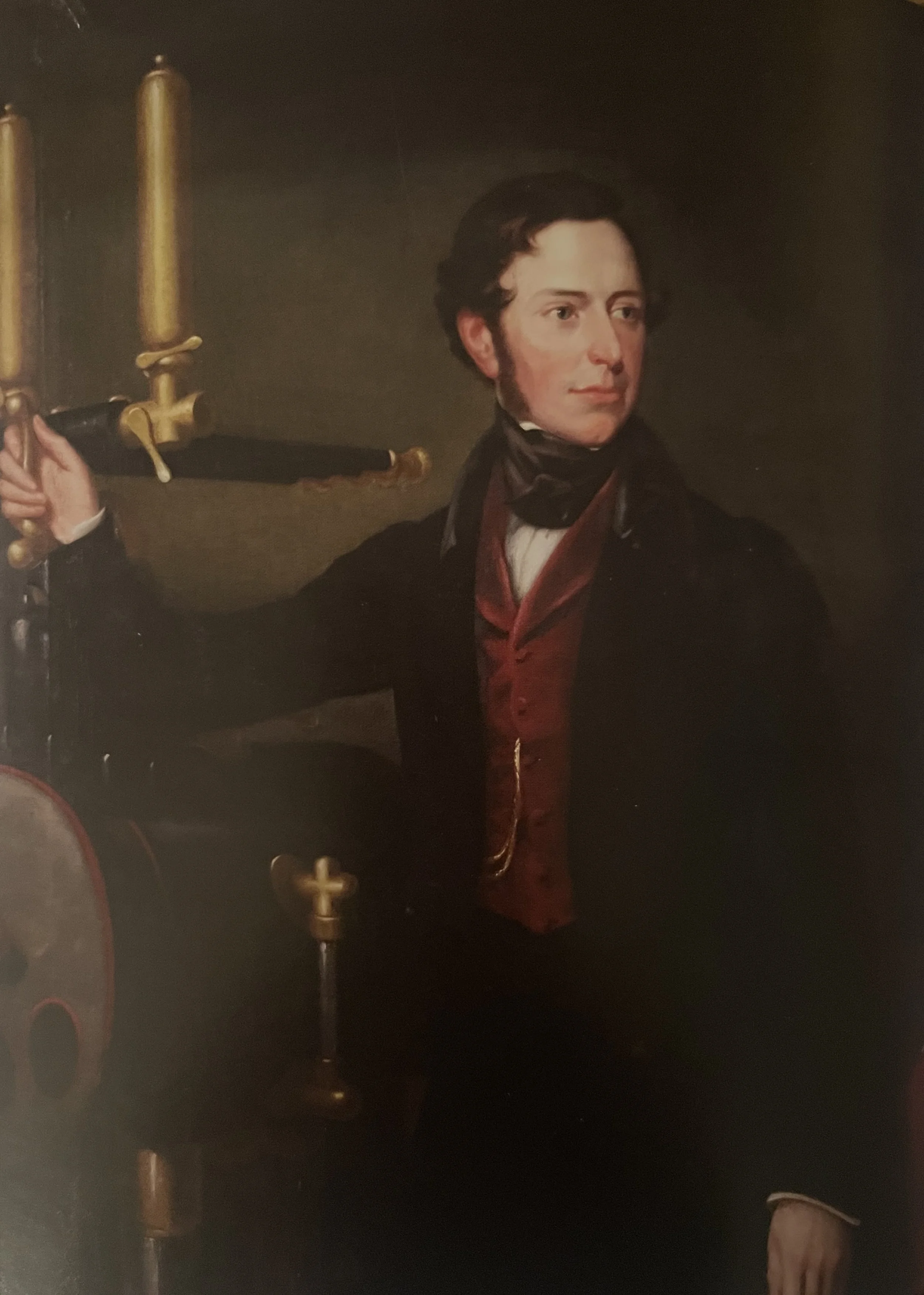About the Man
William George Armstrong (1810–1900) was a brilliant and charismatic figure of the Victorian era . He was a visionary inventor, engineer, scientist and businessman who bestrode the 19th-century world like a colossus, bringing global renown to his great Elswick works on the north bank of the River Tyne – and becoming in the process a national hero. In its heyday, Elswick employed over 25,000 people in the manufacture of hydraulic cranes, ships and armaments.
Armstrong built Newcastle’s Swing Bridge and the hydraulic mechanism that operates London’s Tower Bridge. He created Cragside in Northumberland, the first house in the world to be lit by hydroelectricity, and planted in its grounds an estimated seven million trees and shrubs.
At Cragside his guests included the Shah of Persia, the King of Siam, the Prime Minister of China and the future King Edward VII and Queen Alexandra. He restored Bamburgh Castle on the Northumberland coast, often hailed as England’s finest castle.
The gift of Jesmond Dene to the people of Newcastle, the founding of Armstrong College (which evolved into Newcastle University), and the endowment of seven hospitals, including the Royal Victoria Infirmary, and the Hancock Museum of Natural History (now the Great North Museum) were among his countless acts of philanthropy.
Armstrong became Britain’s largest industrialist and one of the wealthiest men in Europe. He was the first engineer to be raised to the peerage. Those who dismiss him as a fabulously rich arms manufacturer who treated his workers with contempt fail to acknowledge the vast benefits that he brought to his native Newcastle, to his country, and to the human race at large.
When he died, on 27 December 1900, at the age of 90 – a few weeks before Queen Victoria – The Times said in its obituary: ‘With his death Newcastle loses her greatest citizen and the country at large one of the worthies of the expiring century.’
Armstrong was made a Fellow of the Royal Society in 1846, at the age of 35. James Ramsay’s portrait of the inventor with his ‘hydroelectric machine’ was painted to mark the occasion. (Laing Gallery, Newcastle)
Why Armstrong matters
He built Cragside in Northumberland, the first house in the world to be lit by hydroelectricity.
He was an environmentalist 150 years in advance of his time, predicting the end of coal-mining in Britain and advocating water and solar power as energy-generating substitutes for fossil fuels.
At Cragside he and his wife planted seven million trees and shrubs.
He was ‘the inventor of modern artillery’ and ‘Newcastle’s greatest citizen’ (The Times).
He was the world’s first international arms dealer, forging business links with governments around the world, from Brazil to Italy to Japan.
He created the mechanisms that operate London’s Tower Bridge and Newcastle’s Swing Bridge.
He restored one of England’s finest castles – Bamburgh, on the Northumberland coast.
He employed more than 25,000 people at his Elswick Works on the Tyne, in the production of hydraulic machinery, ships and armaments.
He was a lifelong champion of all forms of education and the main founder of the College of Science, which would evolve into Newcastle University.
His generous philanthropy gave a multitude of people access to educational opportunities, health care and activities to improve their quality of life.
In 1887 Armstrong became the first engineer to be raised to the peerage, as Baron Armstrong of Cragside. (Portrait by Hermann Schmiechen, Bamburgh Castle)
WILLIAM ARMSTRONG’S ACHIEVEMENTS AND HONOURS
1846: Fellow of the Royal Society
1850: Telford Medal, awarded by the Institution of Civil Engineers; Glamorganshire Canal Co. prize
1859: Knighthood; Companion of the Bath
1859–1863: Engineer of Rifled Ordnance and Superintendent of the Royal Gun Factory, Woolwich
1860–1900: President of the Literary and Philosophical Society of Newcastle upon Tyne
1861, 1862, 1869: President of the Institution of Mechanical Engineers
1862: Honorary LLD Cambridge University
1863, 1883: President of the British Association for the Advancement of Science
1867: Freedom of the City of Dundee
1870: Honorary DCL Oxford University
1872–73, 1873–74, 1874–75: President of the North of England Mining and Mechanical Engineers
1878: Albert Medal of the Society of Arts, Manufactures and Commerce
1878–1900: Council Member of Durham College of Science (in Newcastle, later Newcastle University); laid foundation stone of Armstrong Building, Newcastle University, in 1887
1882: President of the Institution of Civil Engineers
1882: Honorary DCL Durham University
1886: Freedom of the City of Newcastle
1887: Peerage: Baron Armstrong of Cragside
1890–1900: President of the Natural History Society of Northumberland, Durham and Newcastle
1891: Bessemer Medal, awarded by the Iron and Steel Institute
1892: Honorary Master of Engineering, Dublin
‘Armstrong was the recipient of decorations and orders of Knighthood from the sovereigns of Austria, Denmark, Italy, Spain, China, Japan and Siam.’ Institution of Mechanical Engineers, Memoirs, May 1901
These included:
Knight Commander of the Danish Order of Dannebrog (the oldest order of chivalry in Europe)
Knight Commander of the Austrian Order of Francis Joseph
Knight Commander of the Spanish Order of Charles III
Commander of the Brazilian Order of the Rose
Grand Officer of the Italian Order of SS. Maurice and Lazarus
Order of the Rising Sun of Japan







